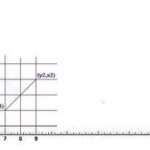In algebra, nothing is more basic than learning to solve for a variable. In fact, working with variables is what algebra is all about. A variable is usually represented by a letter, and at the earliest stage, we almost always use ‘x’. This variable can stand for any number, whole, fractional, imaginary or negative, and is usually not just a single number. However, when learning the basics, we usually start with a function which has only one variable, and that variable is almost always a single number.
So that is how we will begin. In a single variable equation, that variable is almost always ‘x’, but can be anything we want to write. If you wanted to use a whole word instead, you could, but it would get tiresome to write that way, so we usually use a single symbol.
Solving For ‘x’
Solving for ‘x’ at its basic format usually consists of three different operations: adding and subtracting, multiplying and dividing, and taking the root, or exponent of various portions of the equation. The goal of using these operations is to get ‘x’, or whatever variable you’re solving for, onto one side of the equation by itself.
Using Addition/Subtraction To Solve For ‘x’
For now, I’ll show you a couple elementary examples, so you can get the hang of it.
Let’s say you have an equation like:
x + 3 = 0
So, to get ‘x’ by itself, we need to get rid of that 3. How do we get rid of the 3 without changing the value of the equation? We have to subtract it from both sides, like so:
x + 3 – 3 = 0 – 3
Then, you simply do the math, and get this:
x + 0 (which you can leave out, because x + 0 just equals x) on one side of the equation, and -3 on the other side.
Which means that in this case, x = -3
I assume you’ve got a fair grasp of that concept, but if not, I’ll do another:
x – 5 = 7
So, to get ‘x’ on a side by itself without changing the value of the function, you need to add 5 to both sides.
x – 5 + 5 = 7 + 5
And then you do the math, you get:
x = 12
I’m sure you get the point now.
Here’s a couple sample problems to try out before we move on to the more complicated stuff. Solve for ‘x’ in each of these:
x + 3 = 5
4 – x = 0
5 + x = 8
7 = 4 + x
Are you done with that yet? Well, I may have slipped a tricky one in that bunch there, so let’s go on to the next operation that you can use to get ‘x’ alone on one side of the equation.
Using Multiplication/Division to Solve For ‘x’
Okay, with multiplication and division, it’s really basically the same thing, except that you’re always working with some multiple of ‘x’ or ‘x’ divided by something.
Basically, what you do, is divide both sides by the multiple of ‘x’, or multiply both sides by the divisor, in order to move that operator to the other side of the equation.
Examples:
3x = 9
To get ‘x’ on one side by itself, you just need to divide both sides by 3, like so:
3x /3 = 9/3
And if you do the math through, you get:
1x (which is just x because 1 times anything is itself) = 3
So, x = 3 in this case.
Another for your trial:
x/2 = 5
In order to get ‘x’ on one side, you just need to multiply both sides by 2:
2x/2 = 2*5
Which, if you do the math through, gives you:
x = 10
Now, to make things more complicated. You have learned the order of operations, correct? If not, it goes powers/roots first, then multiply/divide and last you do add/subtract. That is for when you are working with just numbers, or plugging numbers in to the variables yourself.
When you are solving for x, you need to get rid of constants first, which means you use the add/subtract operators first, and then you get rid of all the excess stuff, working inward toward ‘x’.
So, with a problem that has both multiples and a constant:
3x + 2 = 5
First, we need to get the 2 to the other side, by subtracting both sides by 2
3x + 2 – 2 = 5 – 2
Which is:
3x = 3
Now, we can divide by the multiple:
3x/3 = 3/3, which is:
x = 1
Here’s a couple problems to try on your own:
2x = 10
3x = 12
5x = 20
x/4 = 2
Now, on to the last main operator to use:
Solving For ‘x’ By Taking The Root Or Raising To A Power
Okay, this one is relatively self-explanatory. If you have a root or a power in the problem, you simply do the reverse operation to get rid of it on the side that has ‘x’. This is because the root of a number, raised to the same power as the root (say square root, squared) is equal to the number.
Please forgive my formating in the following, I can’t seem to make the square root symbol with this program.
So, if you had, say:
the Square Root of ‘x’ = 2
You would simply square both sides to get to ‘x’ by itself:
x = 4
I can’t really offer up any problems with roots easily, since I don’t have the ability to use that symbol, so my problems are going to involve the use of powers, if you want problems with roots, you can do a search for easy problems on the web. Remember to add/subtract constants first, then multiply/divide (since they’re further from ‘x’ than the power), and finally do your roots.
Solve for x:
3x^2 + 5 = 17
7x^3 – 3 = 186
5x^2 – 2 = 18
Have fun with those problems. I chose some fairly simple ones to get you started. You can try more difficult ones on your own once you understand the principles behind these.




